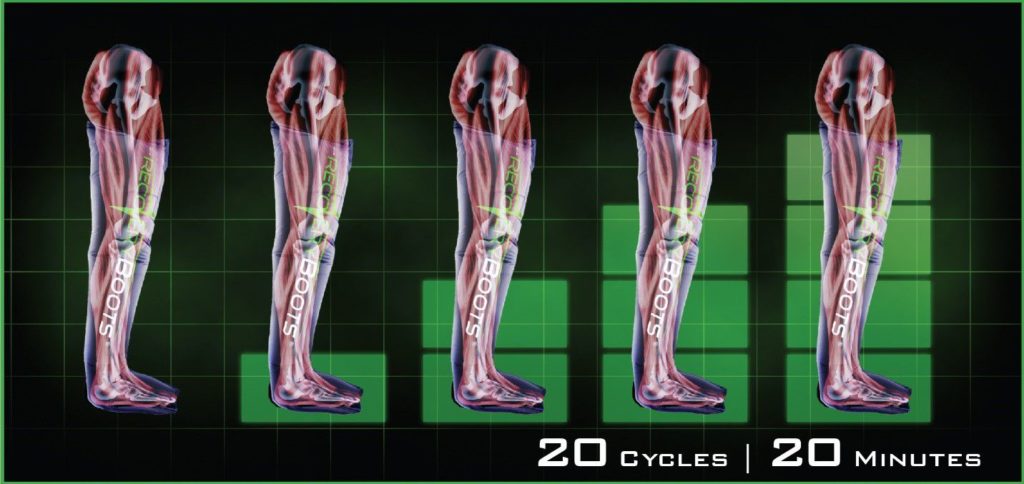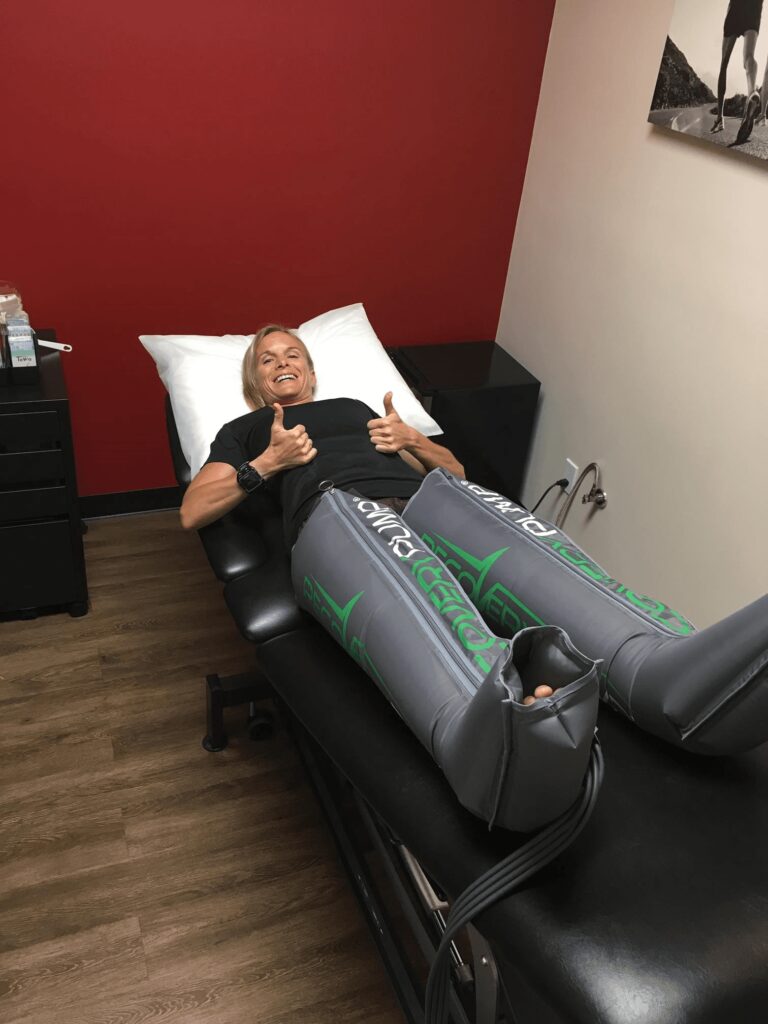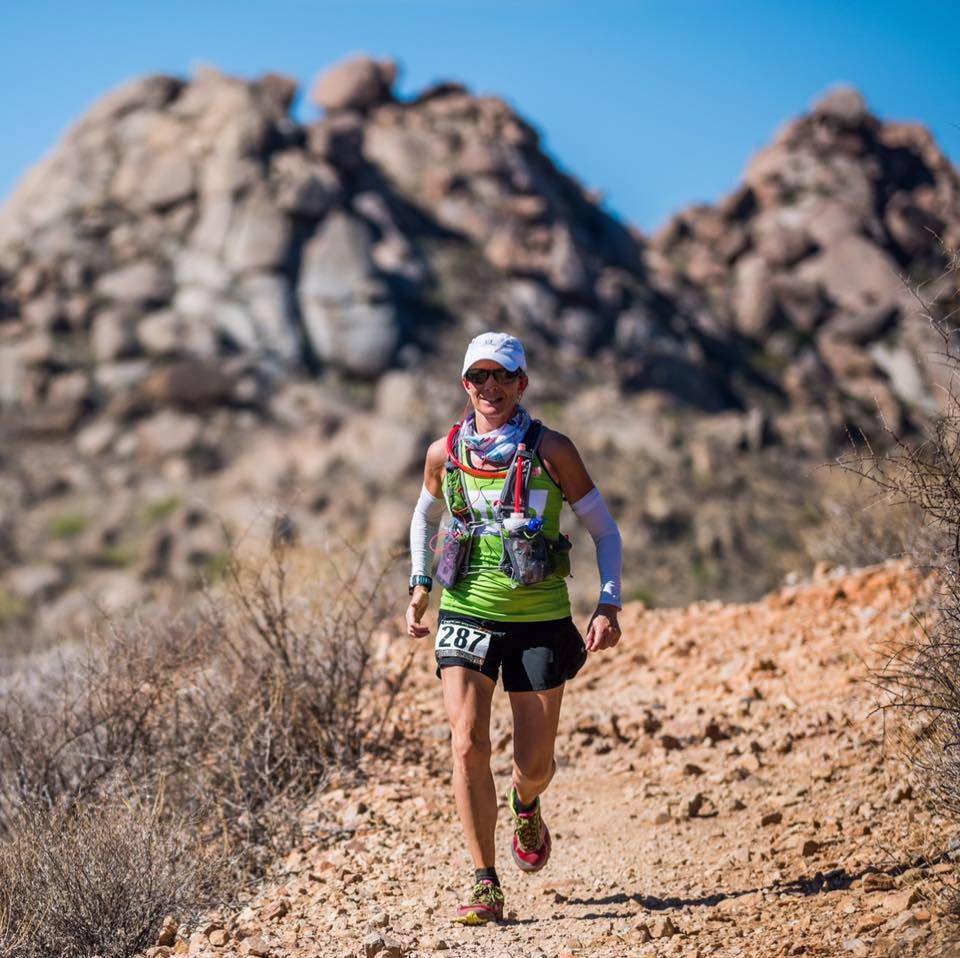Ever wonder why hockey players are riding an exercise bike following a gruelling overtime game in the playoffs? You’d think they would want to just get home and get some rest. The fact is, they are working on pumping lactic acid and other metabolites out of their muscles to promote recovery and decrease soreness – hence the term active recovery.
An alternative to active recovery is passive recovery – the typical ones are cold and hot tubs. Recently, passive compression has become more popular with athletes to simulate the pumping effect of active muscles leading to quicker recovery and less soreness.
We all know that the heart pumps blood to the rest of the body but, do we know how the blood travels back to the heart? In order to get the blood and metabolites back to the heart, our muscles must contract and squeeze the fluids back up the lymphatic and venous systems. Hence, cycling after gruelling hockey, soccer and football games.
Recovery Pump has designed a pneumatic system which provides sequential compression to passively move these by-products from your distal extremities to your trunk, so you don’t have to create more by-products or exert yourself any further, like you would with active recovery.

The popular Recovery Boots provide such an effect by pumping air into special garments which provide increasing compression from your toes to your calves all the way up to your trunk.
Frequently Asked Questions
1) When is the best time to use Recovery Pump?
Recovery Pump can be used before and after exercise. Typically, athletes will use them after a workout for 30 – 45 min. The sooner after a workout, the more effective the system will be in moving metabolites back to the lymphatic and venous system.
Some athletes report that using the Recovery Pump system before a workout for 15 to 20 minutes, acts as a “warm-up” and improves the result of the work out.
2) What can I expect?
Recovery Pump works by providing sequential pressure from the distal limbs (fingers/toes) to the more proximal. You will feel the pressure at your toes/fingers then gradually moving up your limbs lasting for 30 sec then deflating for 15 seconds, before starting the next sequence. treating lymphedema following lymph node removal with breast cancer.
3) Does it actually work?
Research studies have been conducted to assess the efficacy of external pneumatic compression (EPC) on recovery. One study assessed 1)flexibility 2)isokinetic peak torque 3)pressure pain threshold 4) lateral quad biopsy (to assess metabolic markers) following 3 consecutive days of heavy squats followed by EPC or sham and on days 5/6/7 of EPC or sham without working out.
The study revealed 1) improved flexibility in the EPC group over the sham group 2) no change in peak torque (strength) between groups 3) decreased pressure pain threshold in the EPC group and 4) decreased select oxidative stress and proteolysis markers in the EPC group only (ie. lower levels of metabolites that can lead to post-workout soreness).
Another study published in the European Journal of Applied Physiology compared the effects of EPC and sham when used following 3 consecutive days of HIIT (high intensity interval training). The study revealed decreased skeletal markers of proteolysis (ie. protein breakdown).
4) What body parts can Recovery Pump be used on?
Recovery pump has attachments for the lower legs (ie. RP Mini Boots), full legs (RP Boots), full legs and trunk (RP Pants) and trunk (RP Core), upper extremity and upper extremity core (RP Half-Jacket). We currently carry the full legs set-up at Athletes’ Advantage Physiotherapy.
5) What should I wear while using Recovery Pump?
It is best to wear light weight, comfortable clothing and avoid the use of jeans or pants with zippers/buttons on the legs.
6) How long has this technology been in use?
Compression therapy has been in use in the medical community since the 1960’s. Its primary use was for
What are athletes saying?
“On the weekend of the Squamish 50/50 I used the recovery boots before the first day of the race. Once the 50 mile was completed (with over 11,000 feet of climbing) knowing I had to run another 50k, I wore the boots for 30 minutes before bed and again for 15 minutes before the race the next morning. I can honestly say that my legs felt pretty fresh for running a hard 50 miler the day before. I successfully completed both races and found the boots made my legs feel fresher than they normally would feel after running 130 kms and over 19,500 feet of climbing in just over 24 hours. “
Dennene Huntley Ultramarathoner Team Canada – World Ultramarathon Championships 2017



Joe Boland
“I had an excellent 1500m. Was ranked 15th going into the event. Finished 5th in the finals yesterday afternoon. Wasn’t far from a medal (about a second) but I left it all on the track so I can live with that. Thanks so much for the boots. It made a true difference between the semis (that occurred at 9pm on Saturday night) and the finals at 11am the next morning. I felt surprisingly fresh for the finals even though there was only 14 hours of recovery”.
Citations
Haun CT, Romero MA, Osburn SC, Healy JC, Moore AN, Mobly CB, Robertson PA, Mumford PW, et al. 2017. Concomitant external pneumatic compression treatment with consecutive days of high intensity interval training reduces markers of proteolysis. Eur J Appl Physiol. [accessed 2018 Oct 13]. hppt://www.ncbi.nlm.nih.gov/pubmed/290758562/.dio.10.1007/500421-017-3746-2.
Haun CT, Roberts MD, Romero MA, Osburn SC, Mobley CB, Anderson RG, Goodlett MD, Pascoe DD, Martin JS. 2017. Does external pneumatic compression treatment between bouts of overreaching resistance training sessions exert differential effects on molecular signaling and performance-related variables compared to passive recovery? An exploratory study. PLoS One. [accessed 2018 Oct 13]. hppt://www.ncbi.nlm.nih.gov/pubmed/28662152/. doi 10.1371/journal.prone.0180429.
